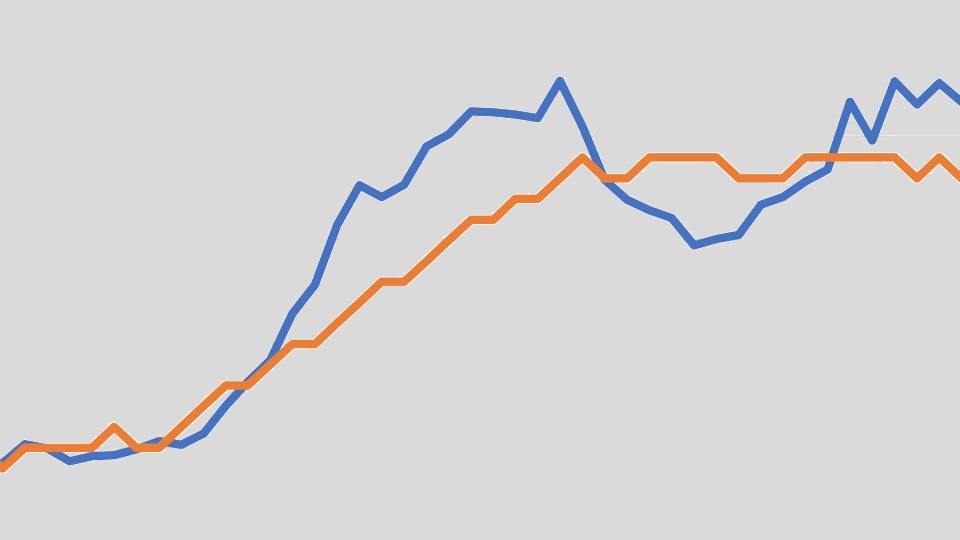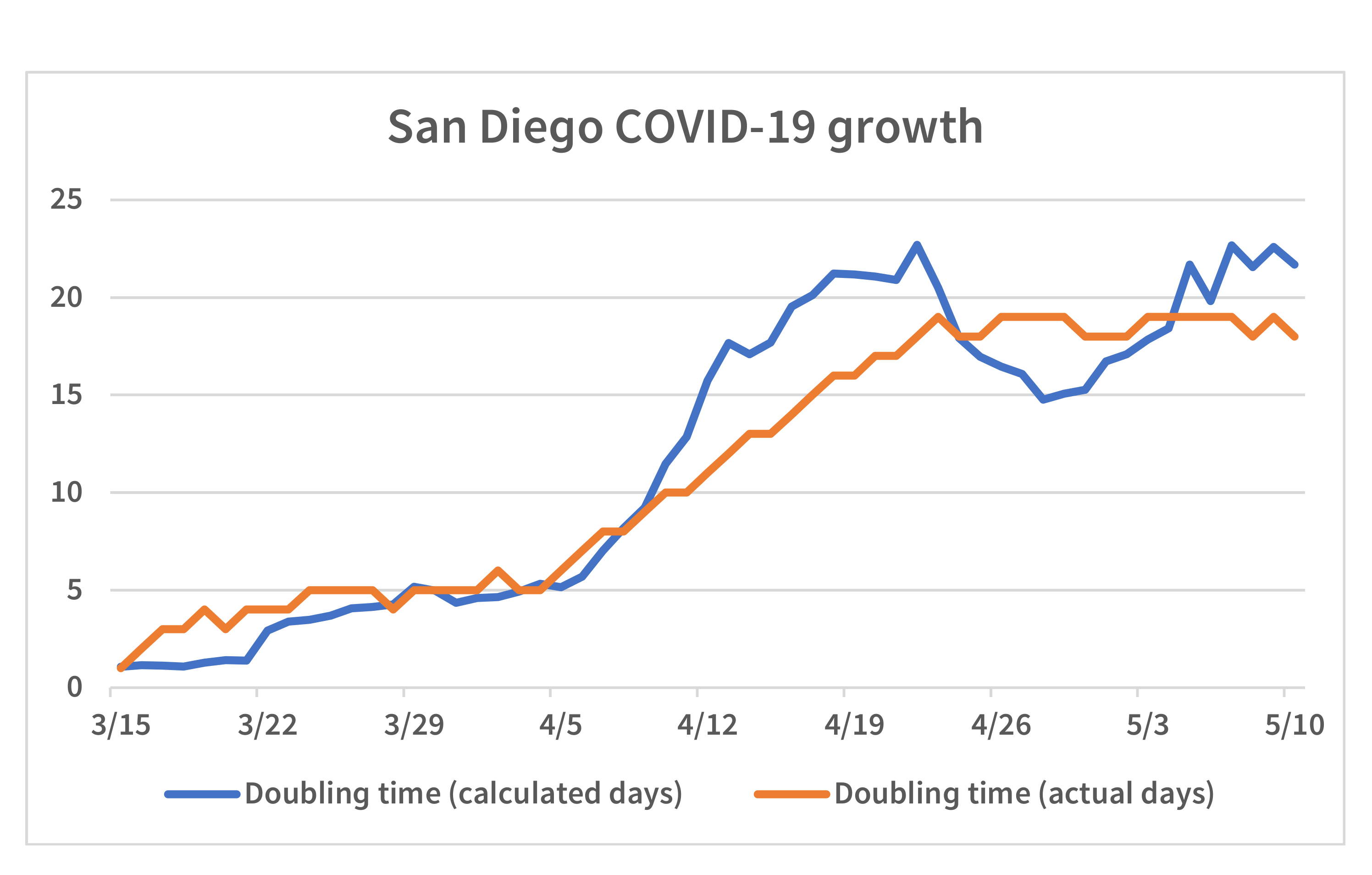
==COVID-19 in San Diego==

COVID-19’s doubling time in San Diego
In San Diego, the lockdown has been fairly effective: We have decreased the doubling time (the number of days it takes for the number of COVID-19 cases to double) from four days to 20 days. However, we still have exponential growth in San Diego: The virus is still spreading, and current growth figures means it will take between three to five months for pretty much everyone in San Diego to be exposed to the virus.
In the above chart, blue is calculated doubling time, based on the average growth over the previous seven days (since there are weekly fluctuations in growth, we need a seven-day average to show accurate growth). Orange is the actual doubling time, based on how many days ago we had half the current number of cases.
As we can see, the calculated and actual doubling time agree that we’re seeing the number of cases double in just under 20 days.
Since we still don’t really know how many people actually have COVID-19, we don’t know how long it will take for the number of cases to saturate. We know, based on entire populations which have been tested (the crew of the USS Theodore Roosevelt and what not), that there is a high number of asymptomatic cases: Cases where someone does not develop any symptoms at all, and is not even aware they have the virus which cases COVID-19.
I estimate, based on antibody studies, that about 1.5% of the population of San Diego already have the COVID-19 virus, so we will have full exposure after six doublings, or in four months. I estimate that about 10,000 people will end up dying from COVID-19 in San Diego.
What the social isolation has given us is a little time to prepare hospitals for the coming storm. A cure will take over a year; this just lets us reduce fatalities by not overwhelming our medical facilities.
Since COVID-19 is such a new disease, the amount of scientific information we have about it is small, so these figures are very rough guesses, and are probably quite inaccurate.
Speaking of the virus, toilet paper has finally come back to store shelves down here in San Diego last weekend. Life is nowhere near back to normal—there are still lines to enter stores, wearing a mask is mandatory, and other social distancing measures are in place—but almost all essential supplies are available again. And, yes, since I buy TP in bulk at CostCo when it’s on sale, I was never close to running out.
I have been working on Nexuiz Tiny. This is a small version of an open source Unreal Tournament / Quake III Areana clone. In this game, one is in an arena (there are thousands of different arenas of various sizes out there that are compatible with or can be converted in to an arena for this game), fighting one or more opponents to the death with various weapons. Every time an opponent is killed, the killer scores a “frag” and the vanquished player is resurrected. After a few minutes (traditionally, 10 minutes, but I prefer a quick 3-minute match), the player with the most “frags” wins.
The game can be played over the network with other people, but the game also includes bots which make for a satisfying single player game.
This game is a minimalist version of an old open source game called “Nexuiz”; this version only includes seven small arena maps which run well on pretty much anything. The seven maps have even been tested on a 2007 business laptop with very basic Intel graphics acceleration. Nexuiz is no longer developed, but its direct successor, Xonotic, is still actively updated.
Indeed, my fork of Nexuiz includes a conversion of a popular third party map made for Xonotic, as well as the corresponding textures and music.
Nexuiz Tiny can be downloaded from Sourceforge.
Right now, I am working on making a proper Docker container for MaraDNS, so people can download and use MaraDNS without needing to set up an operating system that can support it. While I have no plans to stop making my Windows binary of MaraDNS, this will allow people to more easily download and use this program.
2020-05-13 update: I have made an ASCII version of this graph for Lynx users
Comments are closed.
